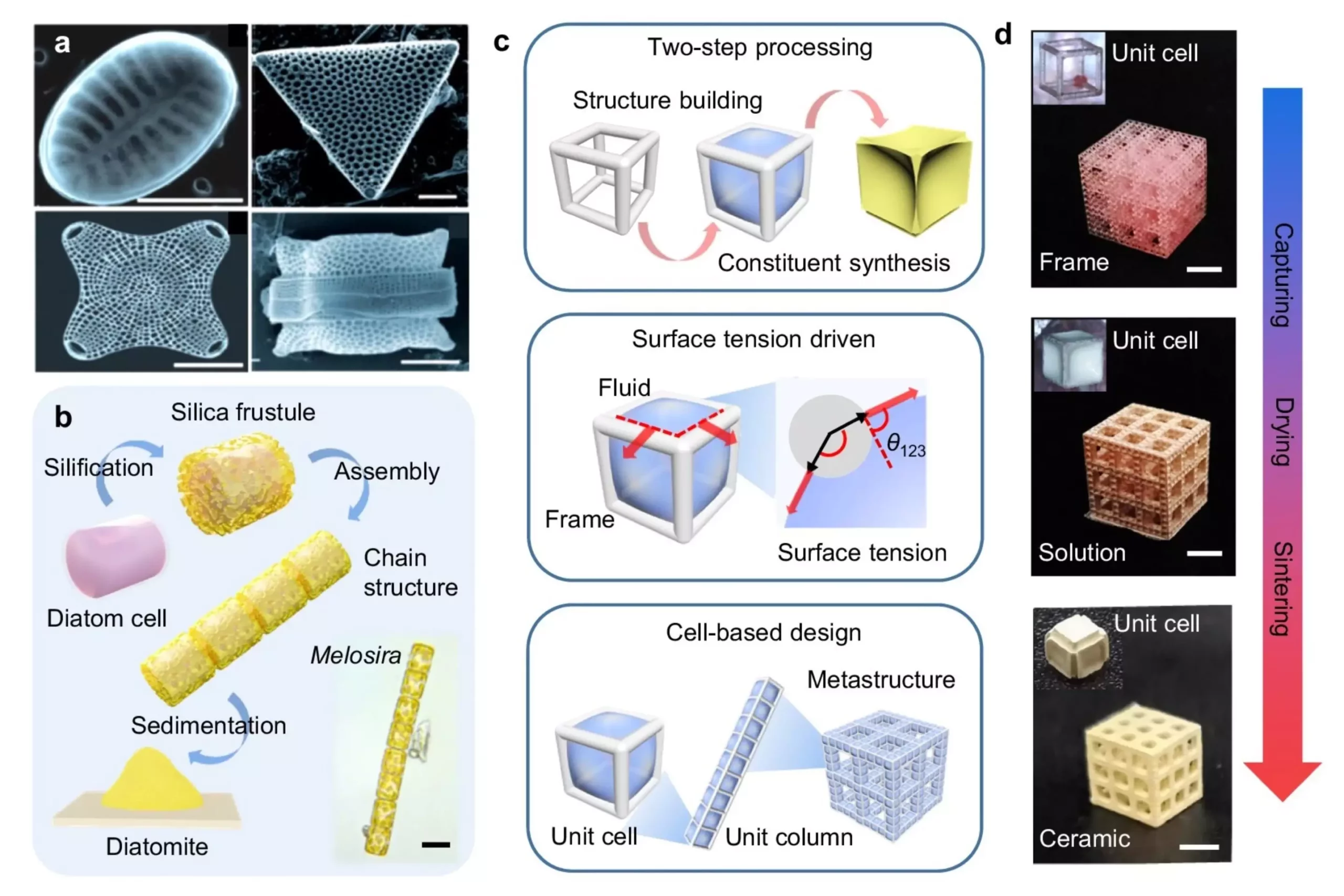In a groundbreaking study conducted by the School of Engineering at the Hong Kong University of Science and Technology (HKUST), a new method has been developed that promises to redefine the world of additive manufacturing, specifically in the realm of 3D printing of cellular ceramics. This innovative approach not only simplifies and accelerates the production process but also opens up a plethora of possibilities in various industries such as energy, electronics, and biomedicine.
Cellular ceramics have long been revered for their stability, erosion resistance, and durability. These properties make them ideal for a wide range of applications, from robotics to solar cells to bactericidal devices. However, the traditional methods of manufacturing cellular ceramics have posed significant challenges, particularly when it comes to creating complex 3D configurations.
Led by Associate Professor Yang Zhengbao, the research team at HKUST devised a surface-tension-assisted two-step (STATS) processing strategy to tackle these challenges head-on. This approach involves the preparation of cell-based organic lattices using additive manufacturing techniques, followed by filling the lattice with the necessary precursor solution. One of the main hurdles faced by the team was controlling the liquid geometry within the lattice, which was overcome by leveraging the natural phenomenon of surface tension.
Through the STATS approach, the team was able to separate ingredient synthesis from architecture building, allowing for the programmable manufacturing of cellular ceramics with varying cell sizes, geometries, densities, and constituent elements. This level of precision and control is unprecedented in the world of ceramic manufacturing and opens up a world of opportunities for structural and functional ceramics alike.
The new method has already shown promising results, with researchers achieving a high piezoelectric constant in cellular piezoceramics, even at very high overall porosity levels. This breakthrough has the potential to revolutionize the way ceramic materials are used in various applications such as filters, sensors, actuators, robotics, and more. The method, inspired by the intricate structures of diatoms, not only overcomes the limitations of conventional manufacturing but also paves the way for the creation of highly precise and complex ceramic architectures.
The development of the STATS processing strategy represents a significant step forward in the field of additive manufacturing, particularly in the realm of cellular ceramics. With its high programmability and precision, this approach has the potential to transform the way ceramic materials are designed and utilized across a wide range of industries. As researchers continue to explore the possibilities of this innovative method, we can expect to see even more groundbreaking advancements in the world of ceramics in the coming years.

